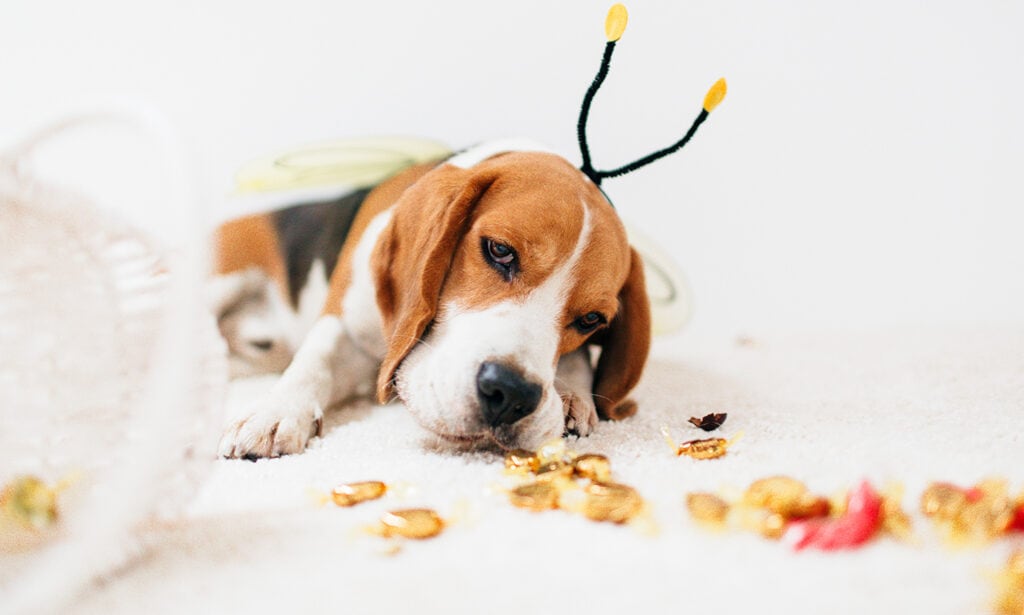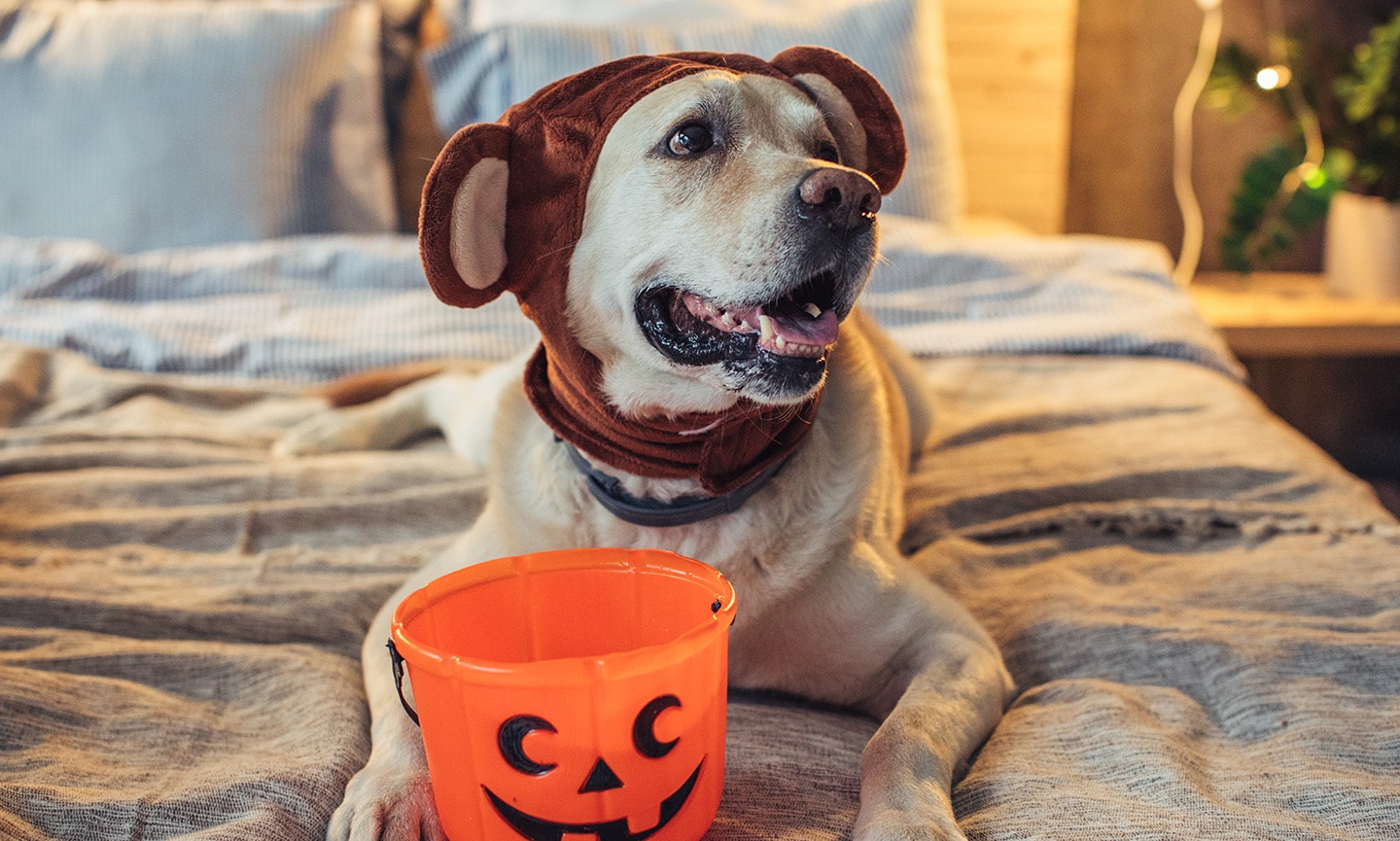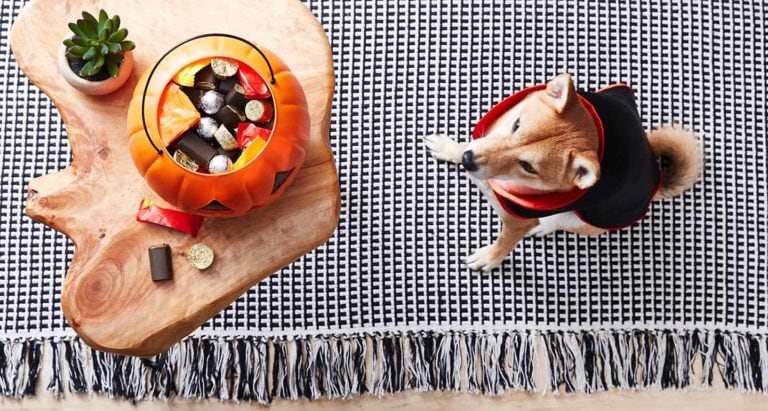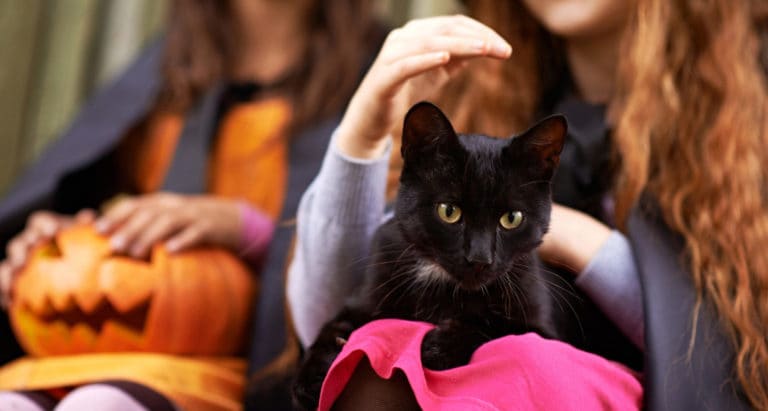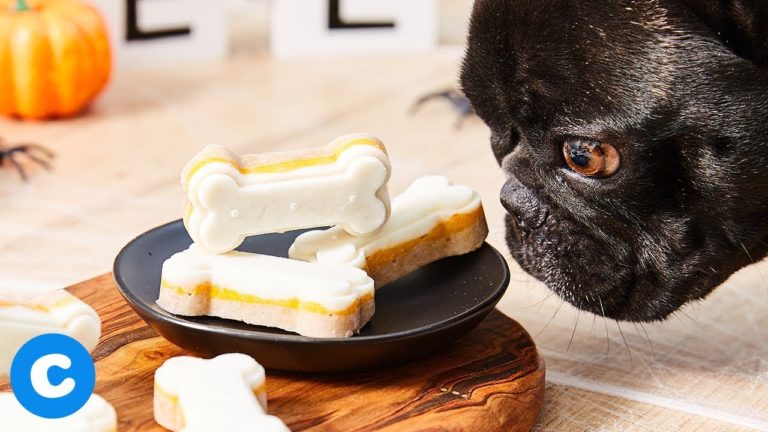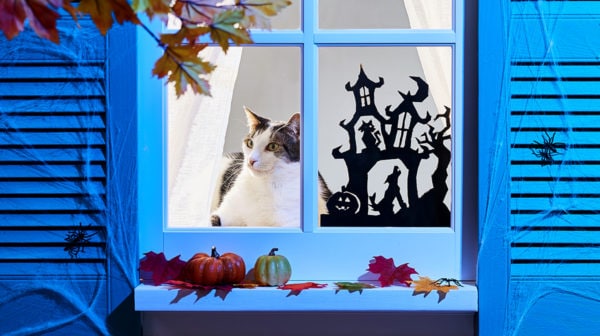This spooky season, we’re all looking forward to some tricks and, most importantly, lots of treats. It’s also the time of year when your pets may try and sneak a piece (or 10!) of candy from your trick-or-treating stash. Unfortunately, if your pet ate a candy wrapper—with or without treats inside—it can wreak havoc on a cat or dog’s digestive system and can potentially lead to serious problems.
If your cat or dog ate a candy wrapper, here’s what to look out for this Halloween to help you feel more prepared.
In This Guide:
Signs Your Pet Has Eaten a Candy Wrapper
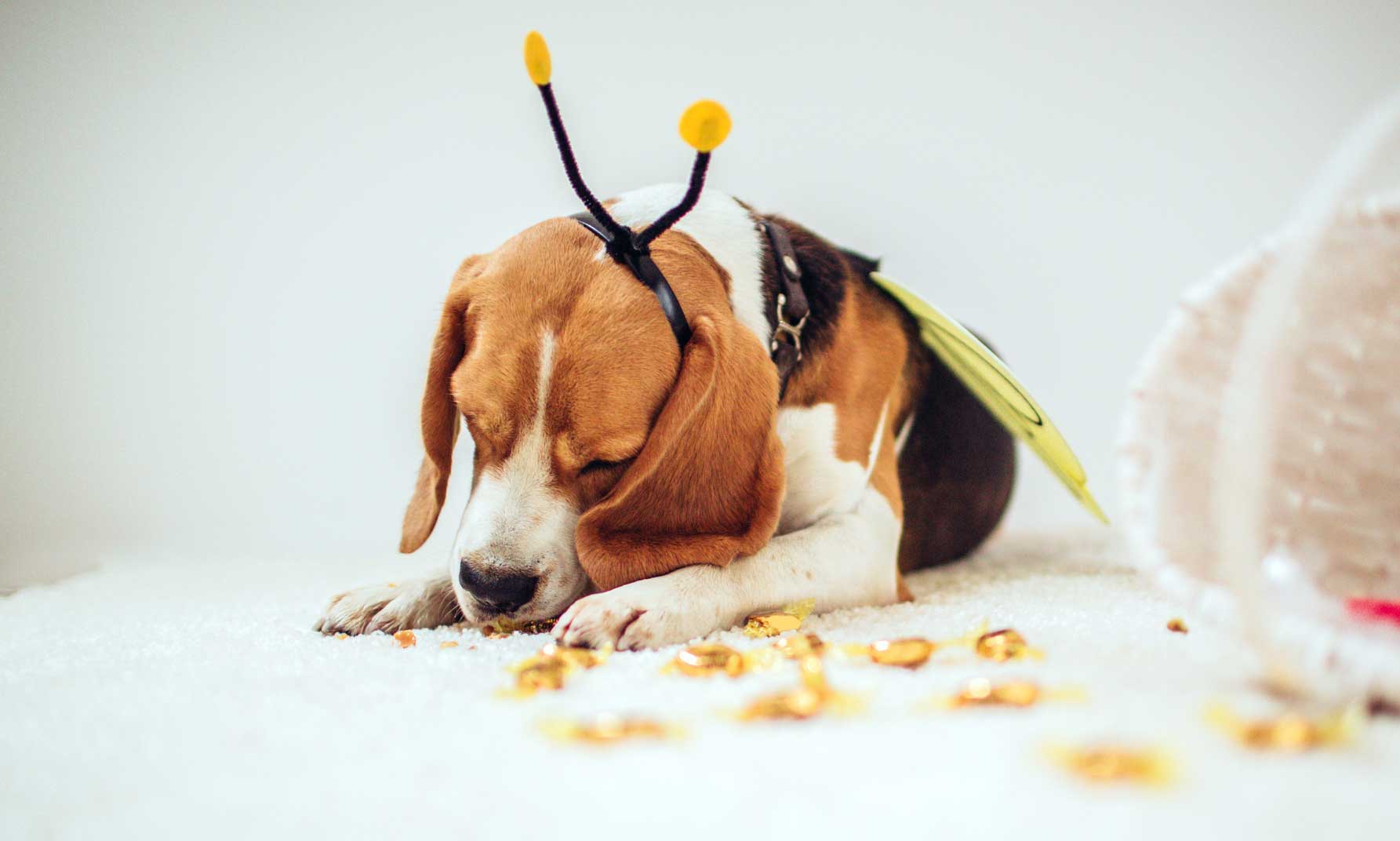
“If your pet gets into Halloween candy of any kind, start monitoring the symptoms they may show,” says Megan Conrad, BVMS, an associate veterinarian at WellHaven Pet Health in Portland, Oregon. “Generally, when pets eat candy, they don't bother to remove the wrappers.”
If your cat or dog ate candy, pet parents should note the following:
- What kind of candy their dog or cat ate
- How much they think was ingested
- If the wrapper was also eaten
If the wrapper was eaten, watch for these signs:
- Vomiting
- Decreased appetite
- Tiredness
- If your pet is unable to poop or straining to poop
Next, search for the wrapper in your pet’s poop. If the wrapper is small, it is likely that the pet will pass the wrapper as a part of the digestion process.
However, depending on the size of your pet (and if the wrapper is large), eating a candy wrapper can cause a medical emergency due to a dangerous blockage.
What if your pet eats a foil wrapper or a cellophane wrapper? This can cause a bowel obstruction, Conrad says, which can require surgery to correct.
And while X-rays and a trip to the emergency vet may be necessary to diagnose this problem, there is also a chance that a candy wrapper can adhere to the lining of your pet’s stomach, which can be difficult to diagnose because it does not always show up on an X-ray, says Jeff Werber, DVM, a Los Angeles-based veterinarian.
What To Do if Your Pet Eats Candy
If you suspect that your pet has eaten a candy wrapper, it’s worth visiting your veterinarian or emergency vet center for a checkup and X-rays.
Most of the time, such episodes do not require surgery, however, sometimes the intestines may need to be lubricated to help dislodge material and allow it to be eliminated properly as part of your pet’s digestion.
Sometimes fibrous foods like bread can help “carry” the wrapper through your pet’s system to elimination, but it’s important to monitor your pet throughout the entire process.
If your cat or dog ate chocolate with xylitol in it (or any chocolate) inside of a candy wrapper, your veterinarian may suggest several methods to induce vomiting and will likely recommend blood testing to assess the degree of toxicity. Prior to visiting your veterinarian, your pet should be kept in a cool, quiet space and should remain as calm as possible.
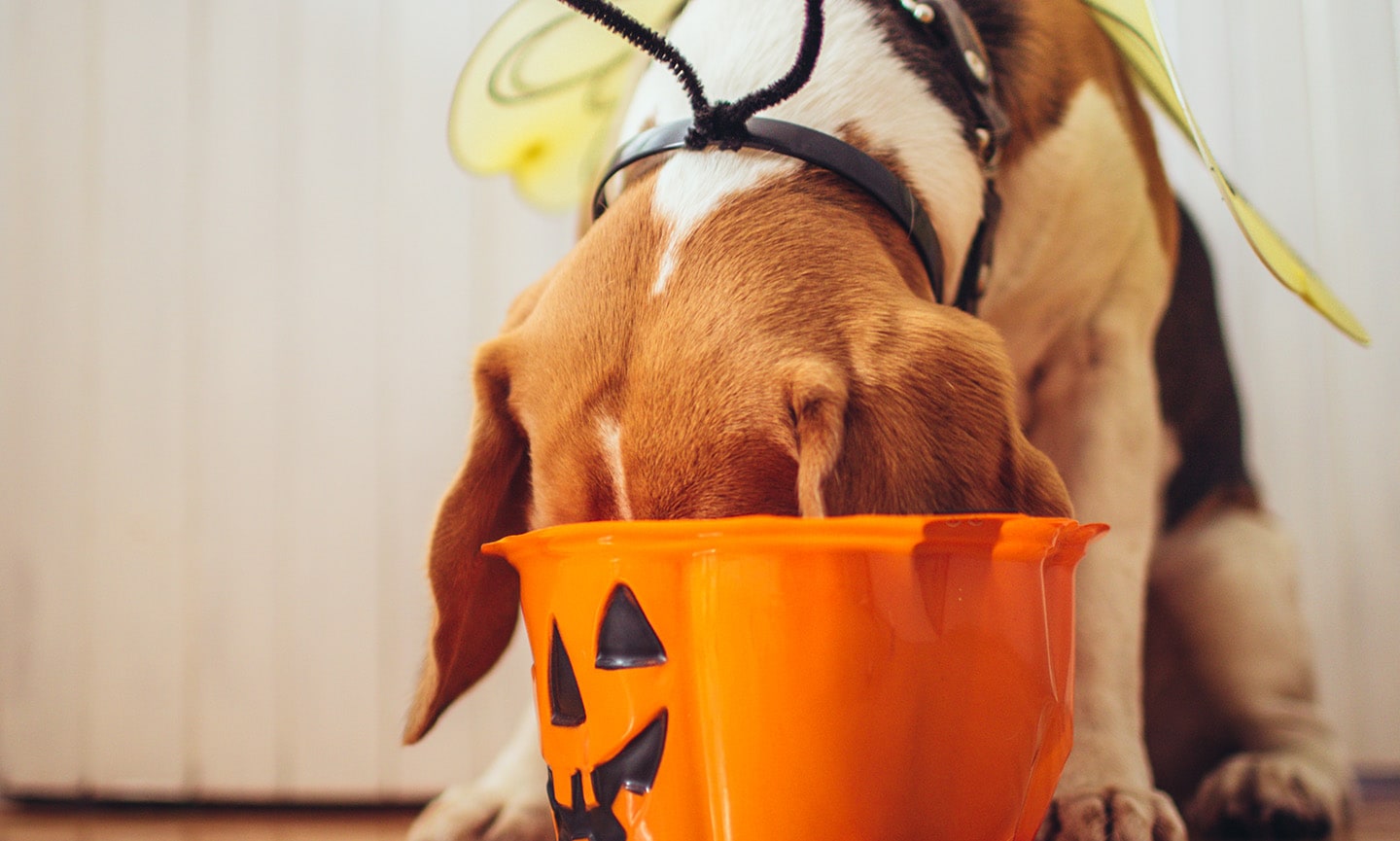
Candy corn, chocolate-covered raisins, caramel apples, and sugar-free candy should all be out of reach for furry friends.
Not only do certain candies, like lollipops and other hard candies, pose a choking hazard, but if candies are consumed along with the wrapper, they can also present problems for your pet, including:
Xylitol Toxicity
Certain sugar-free candies and baked goods contain xylitol, a sugar substitute that lowers blood sugar and can cause:
- Vomiting
- Loss of coordination
- Seizures
- Liver failure
- Vomiting
- Lethargy/depression
- Collapse/coma
Symptoms of xylitol toxicity can develop within 15–30 minutes of its ingestion.
If your pet ingests xylitol, immediately take them to your vet or an emergency vet.
Chocolate Toxicity
Chocolate toxicity is another issue that can be present if your pet consumes a candy wrapper that contains chocolate.
This popular treat among humans is especially toxic to dogs, and if you suspect chocolate poisoning, it’s important to immediately contact your vet or the Pet Poison Helpline at (855) 764-7661.
Different kinds of chocolate have different levels of theobromine, the chemical in chocolate that is toxic to dogs.
Though baking chocolate is the most toxic for pets, dark chocolate, milk chocolate, and semi-sweet chocolate candy can lead to chocolate toxicity and cause symptoms including:
- Vomiting
- Diarrhea
- Low blood pressure
- Seizures
Preventing Your Pet From Eating Candy Wrappers
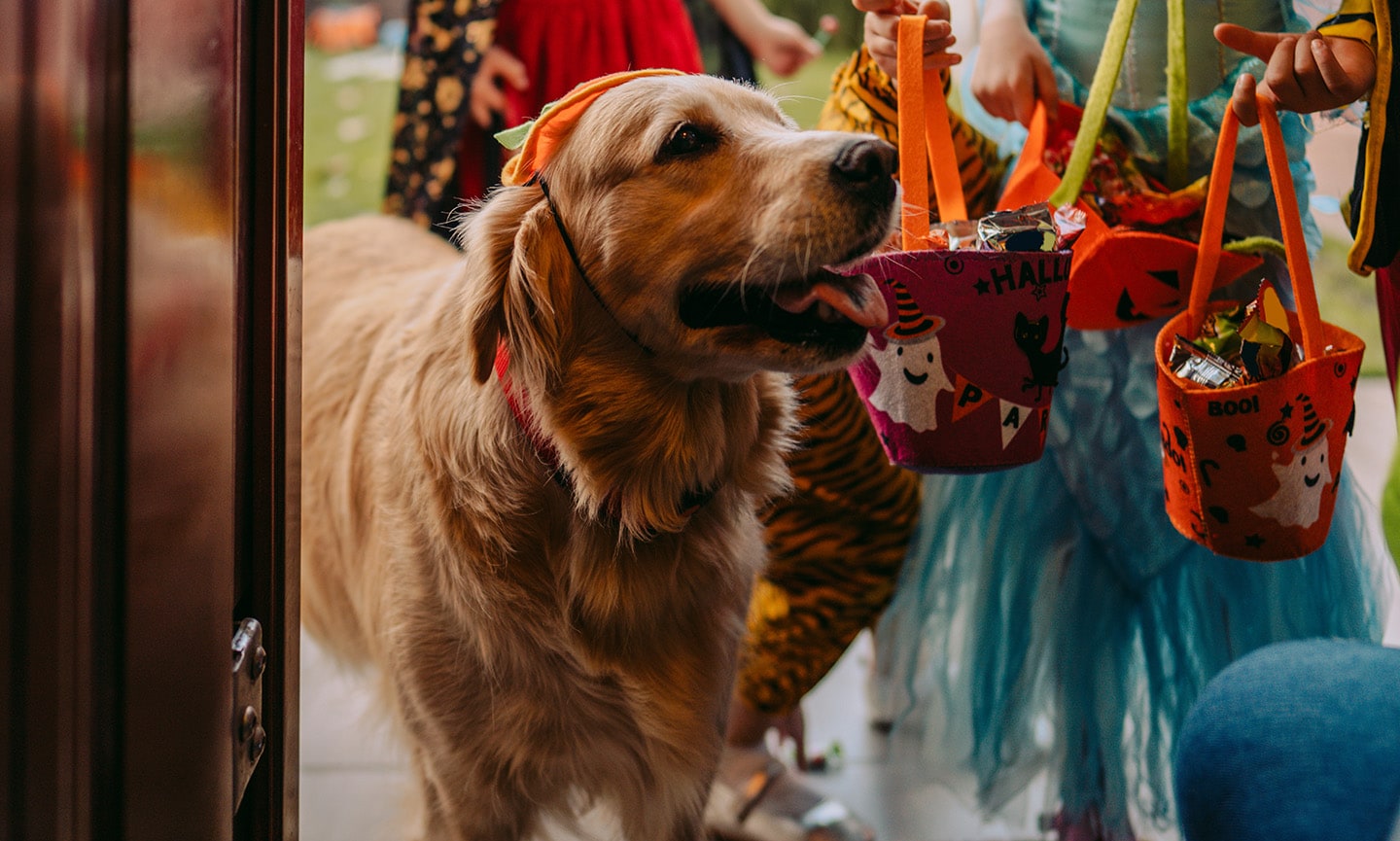
Keep foods and treats out of reach and offer your pet appropriate alternatives.
“The best thing you can do is to try to anticipate the problem and plan for it appropriately,” Dr. Werber says. “If a tasty treat is left on the counter within reach of your pets, you can bet that when your back is turned, they will try to grab it.”
Because certain quantities of items, like chocolate, can become toxic, keep all candy out of reach and be mindful of what party guests and visitors offer your pets.
“You can always find a pet-proof container to stick that candy or wrapped snacks in so they cannot sneak a couple of treats,” Conrad says.
FAQs About Cats and Dogs Eating Candy Wrappers
Q:How long does it take for a dog to pass candy wrappers?
A:"It can take upwards of 24–48 hours for a dog to pass a candy wrapper, if they are going to pass it."
Q:Are candy wrappers toxic?
A:"The wrapper itself is not toxic. Chocolate and sugar-free candy are toxic to pets."
Q:What is the best way to dispose of a candy wrapper?
A:"A tightly closed garbage can is best. Some dogs are magicians, so you need to ensure they are not able to get into the trash."
Q:What other types of wrappers do pets commonly eat?
A:"Food wrappers are another common wrapper besides candy."
It’s natural for you as pet parents to be worried when your dog or cat ingests something they aren’t supposed to eat. Halloween is an especially scary time with the potential for pets to get into your trick-or-treating candy stash quicker than you can say “Boo!”
Make sure you collect as many details as possible before contacting your vet. It’s important to know if the ingredients in the type of candy they’ve eaten match any toxic foods, like those that make sugar-free or chocolate candy so dangerous. And if you still aren’t sure if what your pet has eaten is OK for them, call your vet or the Pet Poison Helpline at (855) 764-7661. Next, take a look at these other human foods dogs cannot eat.
Expert input provided by Megan Conrad, BVMS, an associate veterinarian at WellHaven Pet Health in Portland, Oregon; Jeff Werber, DVM, a Los Angeles-based veterinarian; and Katie Pagán, DVM, a veterinarian at Greenbrier Veterinary Clinic in Bel Air, Maryland.
This content was medically reviewed by Chewy vets.
More Ways to Have a Safe and Fun Halloween:
Share:
